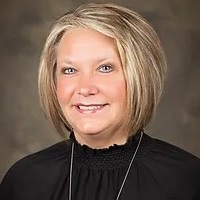
Gary Hamilton, CEO, InteliChart
LinkedIn: Gary Hamilton
LinkedIn: InteliChart
Celissa Halfhill, Health Center Operations Director, The HealthCare Connection
LinkedIn: Celissa Halfhill
LinkedIn: The HealthCare Connection

Some patient populations are harder to engage than others. No one understands this better than Community Health Centers (CHCs), who tirelessly serve marginalized communities often overlooked by traditional healthcare systems.
CHCs are the primary healthcare provider for one in five underinsured people, one in three people living in poverty, and one in seven rural residents—and these numbers are growing. According to the National Association of Community Health Centers, the volume of patients receiving primary care at CHCs grew to 32.5 million people this year, up by one million in the past year. That’s roughly 1 in 10 Americans.
In addition to the sheer volume of patients CHCs must treat, engaging these populations is particularly challenging due to the influence of social determinants of health (SDoH), such as housing and food insecurity, language and literacy barriers, and lack of transportation. Compared to those not facing SDoH, CHC patients are more likely to miss or cancel appointments, not fill or take prescriptions, and be distrustful of providers. They also face a higher incidence of chronic diseases and conditions that require regular monitoring and care.
Breaking down barriers with the right technology
The HealthCare Connection (THCC) in Cincinnati, Ohio, is quite familiar with these challenges. Founded in 1967, this CHC has seven locations, including four school-based clinics. Last year, the clinic served more than 20,000 patients. Of those patients, 54% were children, 79% were families with income less than 200% of the federal poverty level, 61% were minority and 14.4% were uninsured.
To deliver the care these populations need, THCC must engage their patients through clear communication and detailed educational information to encourage full patient participation in their care. However, like many other CHCs, THCC faces significant challenges due to a shortage of providers and support staff. While they recognize the importance of these engagement strategies, implementing them effectively is difficult without the right resources to keep them running as efficiently as possible.
THCC recently invested in state-of-the-art patient engagement technology to provide easier access to care, optimize administrative workflows, ease the burden on staff, improve reporting, and increase revenue.
With these goals in mind, THCC chose a patient engagement platform with the following features:
- Patient Portal – The portal serves as the heart of the platform, offering patients 24/7 access to their health records from any digital device. It provides detailed summaries of office visits, hospital stays, medication lists, and lab results. Additionally, patients can access educational materials related to their diagnoses and procedures, as well as receive post-visit instructions following in-patient or ambulatory encounters. This easy access to information promotes patient autonomy and encourages active engagement in their care.
- Patient Intake – Automated intake technology simplifies online registration, making it easy for patients to provide their medical information. This approach eliminates the need for paper forms in the waiting room, reducing wait times and minimizing patient frustration. Patients are also encouraged to create an account on the THCC portal to further engage with their care. If assistance is needed, THCC staff are trained to help with the sign-up process.
- Patient Notification – Reaching THCC patients can be challenging for various reasons. Automated notifications help alleviate this issue by reducing the need for staff to make multiple phone calls or send letters with no guarantee of delivery. Additionally, this feature alerts practices when patients have not scheduled a maintenance appointment or completed a self-management task, such as recording a blood pressure reading or monitoring glucose levels.
- Two-way Texting – Many THCC patients lack Wi-Fi at home or don’t have internet-connected devices beyond smartphones, so it’s unsurprising that an estimated 85% of THCC patients rely on two-way texting. This method is the fastest and easiest way for the center to communicate, answer questions, and notify patients about relevant information. In addition to being a secure and confidential means of communication, two-way texting allows patients to ask questions about their care or treatment without the constraints of a medical appointment. As a result, patients are more likely to seek clarification about any doubts or misunderstandings.
- Patient Satisfaction Surveys – Patient satisfaction surveys help THCC solicit honest feedback from patients without the pressure of an uncomfortable face-to-face conversation. They use this feedback to identify problems and improve operations for enhanced patient engagement. The ability to conduct surveys also is important to population health initiatives led by the center.
THCC didn’t have to wait long to get started. Implementation was quick as the features they selected were part of a broader patient engagement platform that integrated seamlessly with their existing EHR and practice management systems. This meant no system upgrades or extensive training were required. Patients are also increasingly adopting the platform and have access to ongoing training, both in and out of the office, if they need assistance.
Since implementing the new patient engagement technology, THCC clinicians have observed fewer appointment cancellations, fewer unfilled slots, and an increased number of patients treated per day. The “robust confirmation” of appointments through two-way texting has been a significant factor in achieving these positive outcomes.
Staff welcome the new technology because they can manage patient interactions with fewer phone calls and instead focus on other tasks. They can also coordinate operations among the seven THCC locations without unnecessary friction.
THCC expects improved patient engagement will lead to better outcomes and higher scores on quality reporting metrics. This, in turn, could lead to increased revenue through grants and performance-based incentives from health plans and government agencies.
CHCs operate on a tight budget, so they must choose wisely when investing in technology. Choosing a system, like InteliChart, to boost patient engagement has proven to be a smart choice for their staff, providers, and patients alike.
